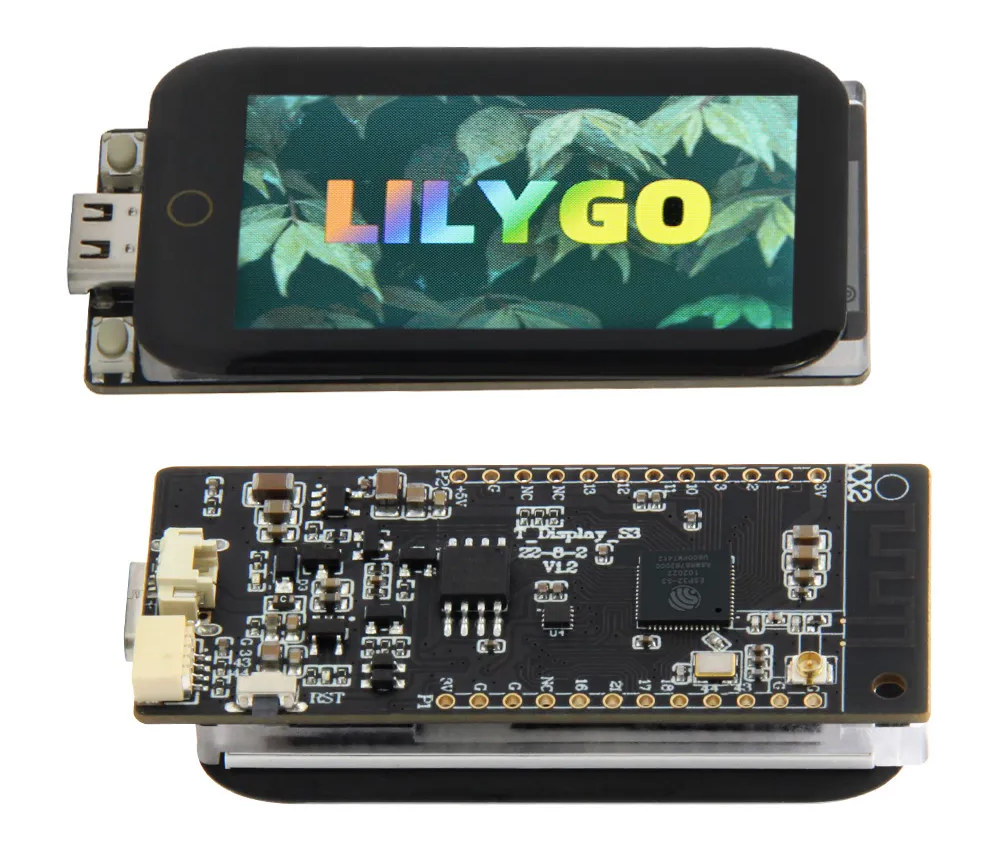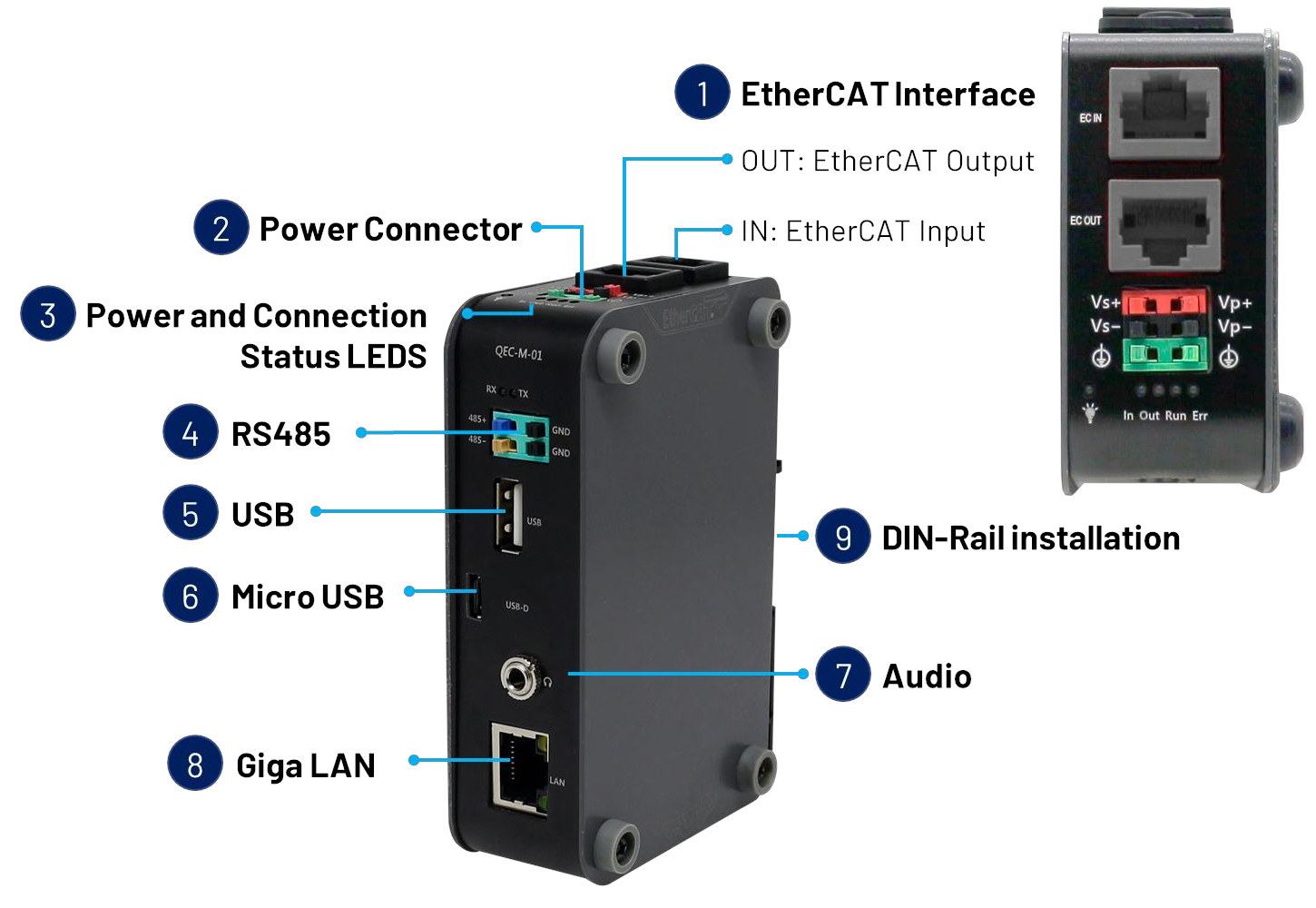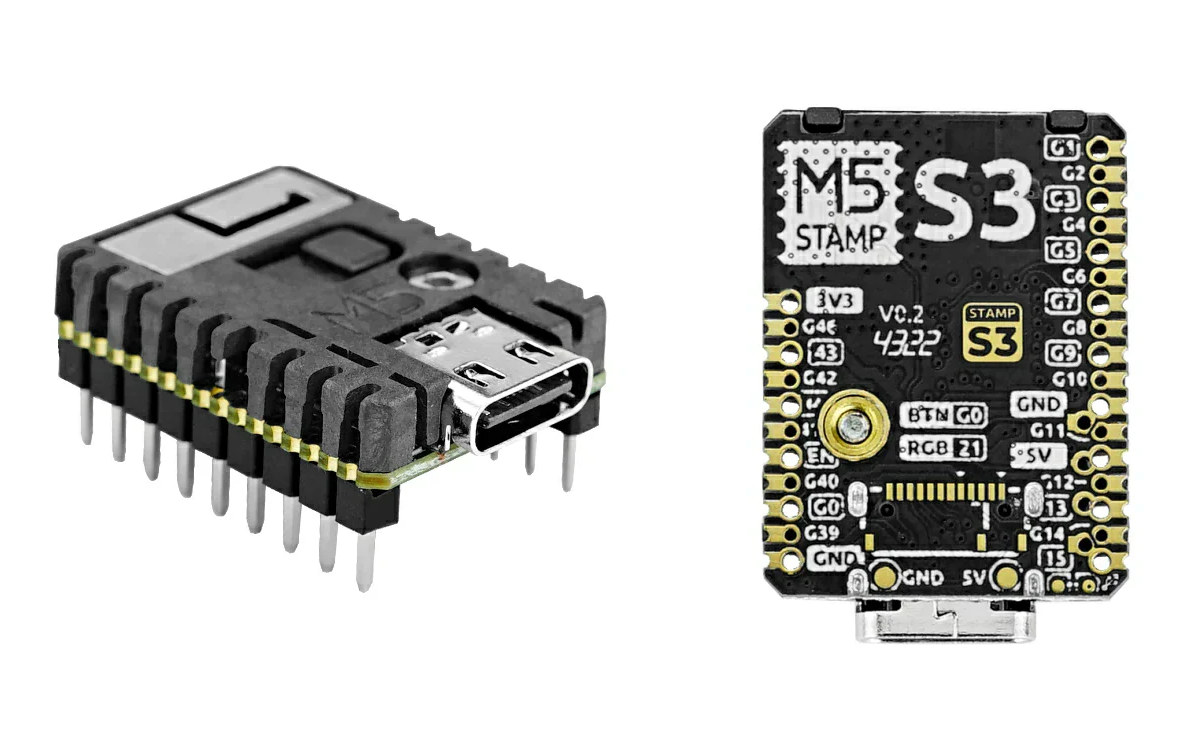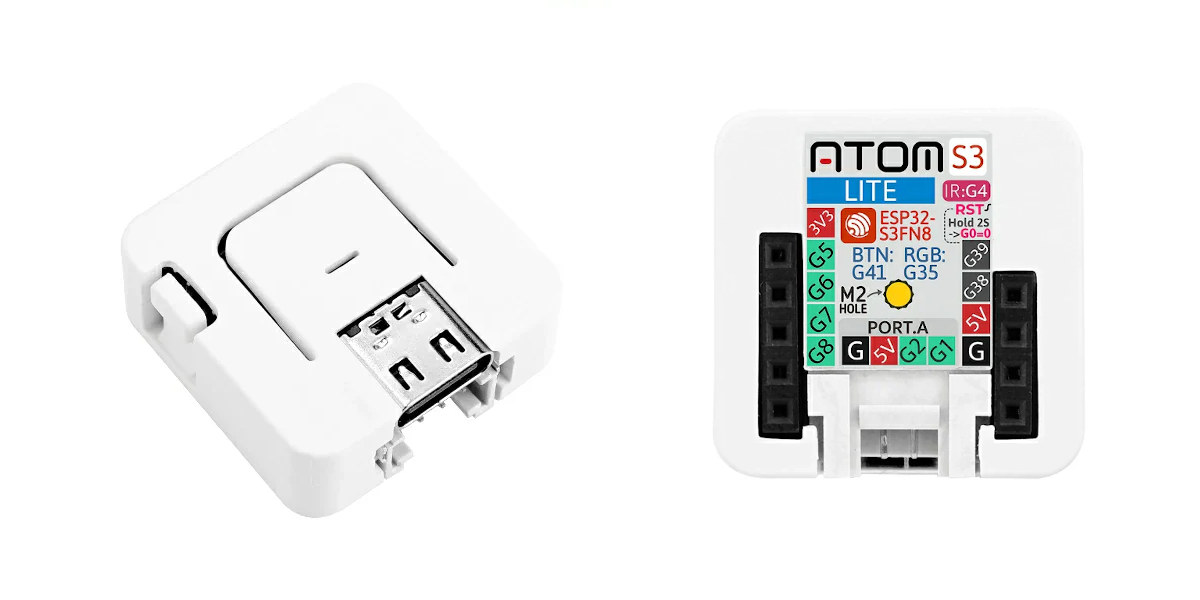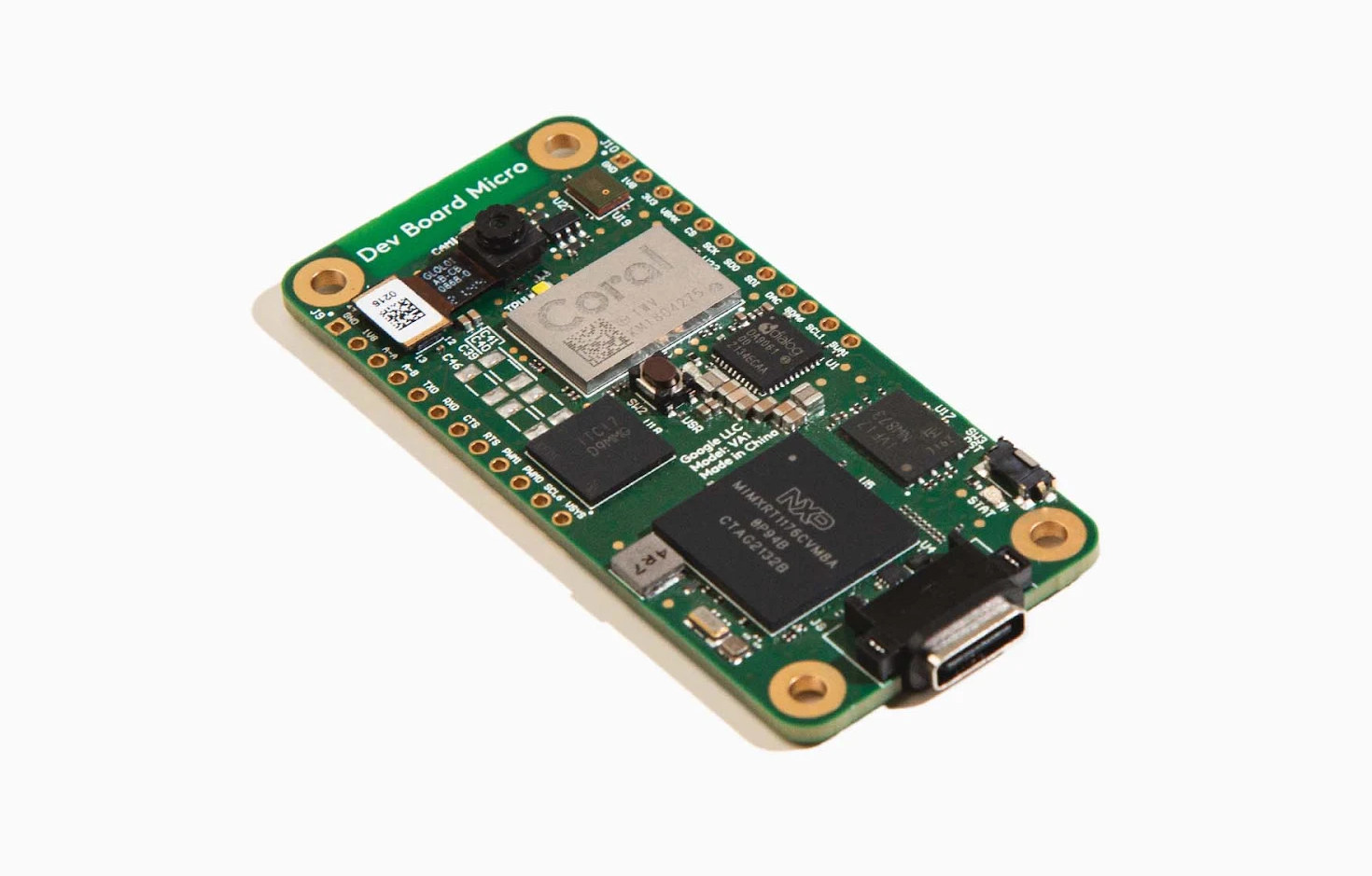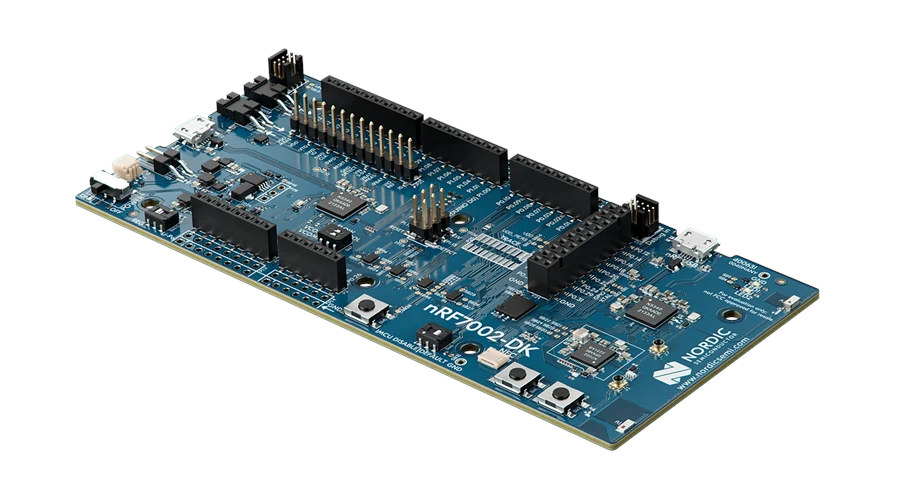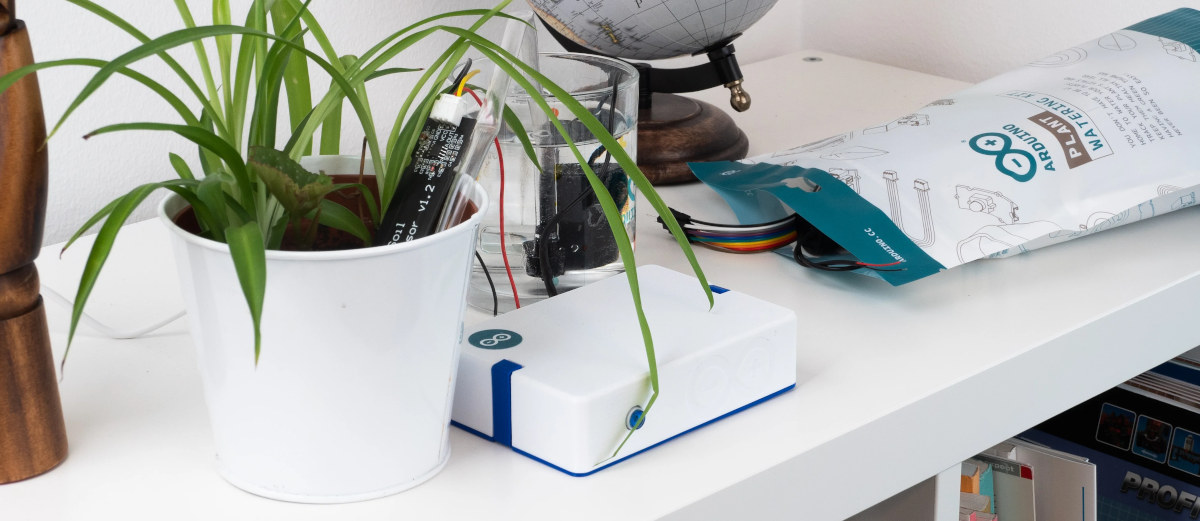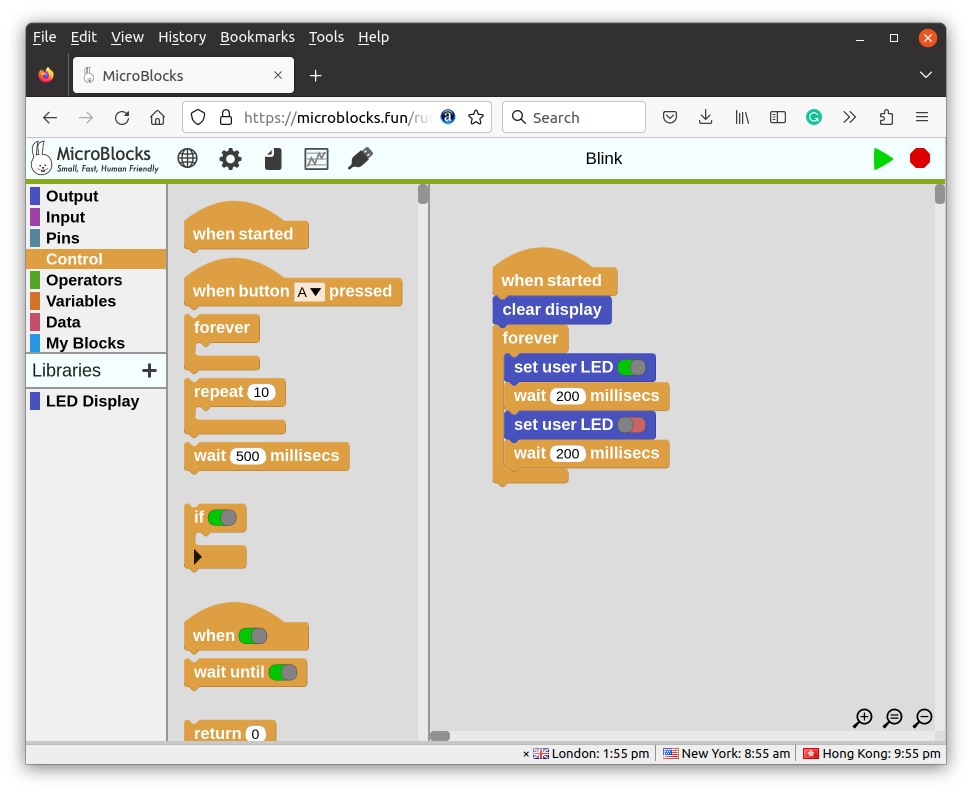T-Display-S3 Touch is an update to the T-Display-S3 “Basic” ESP32-S3 board that adds a 320×170 touchscreen using a CST816 I2C touchscreen sensor. The rest of the specifications remains the same with an ESP32-S3R8 dual-core WiFi and Bluetooth LE microcontroller, 16MB flash, a 1.9-inch 320×170 color display, a USB Type-C port, a few I/Os, and support for a LiPo battery. T-Display-S3 Touch specifications: Wireless MCU – Espressif Systems ESP32-S3R8 dual-core Tensilica LX7 @ up to 240 MHz with vector instructions for AI acceleration, 512KB RAM, 8MB PSRAM, wireless connectivity Storage – 16MB flash Connectivity via ESP32-S3 2.4 GHz 802.11 b/g/n Wi-Fi 4 with 40 MHz bandwidth support Bluetooth Low Energy (BLE) 5.0 connectivity with long-range support, up to 2Mbps data rate. PCB antenna and external u.FL antenna support Display – 1.9-inch 320×170 IPS full-color LCD using the ST7789V 8-bit parallel display controller and Shenzhen Zhengxin CST816 I2C touchscreen sensor. USB – […]
Arduino-programmable EtherCAT master runs FreeDOS on Vortex86EX2 x86 processor
ICOP QEC-M-01 is an EtherCAT master system running FreeDOS based on DM&P Vortex86EX2 dual-core x86 processor. It is programmable with an industrial Arduino IDE – the 86Duino IDE – that supports an EtherCAT API for real-time field monitoring and big data collection. The system can be used for industrial automation applications that require precise timing and it can monitor the hardware’s voltage, current, and temperature to calculate/estimate carbon emissions for industrial manufacturing to assist in the tracking of a factory’s carbon footprint. ICOP QEC-M-01 specifications: SoC – DM&P Vortex86EX2 dual-core processor with the Master core clocked up to 600MHz and the Slave core up to 400MHz System Memory – 1GB or 2GB DDR3 Storage – 32MB SPI Flash, MicroSD card, optional eMMC flash Networking Gigabit Ethernet RJ45 port 2x 10/100Mbps Ethernet RJ45 ports for EtherCAT master with support for CANopen over EtherCAT (CoE), File Access over EtherCAT (FoE), Distributed Clocks […]
M5Stamp S3 WiFi and BLE IoT module offers up to 23 GPIOs through 2.54mm and 1.27mm pitch holes
M5Stamp S3, aka M5Stamp ESP32S2 or Stamp S3, is a tiny ESP32-S3 WiFi & Bluetooth LE (BLE) IoT module with a USB Type-C port, over 20 I/Os available through 2.54mm and 1.27mm pitch headers and castellated holes, and a heat-resistant cover. Many of the “new” ESP32-S3 hardware platforms launches these days are often updates from an ESP32 design, and the M5Stack’s M5Stamp S3 is no exception building on the original M5Stamp Pico, and its ESP32-C3 variants, namely M5Stamp C3 and C3U. M5Stamp S3 specifications: WiSoC – Espressif Systems ESP32-S3FN8 dual-core 32-bit Xtensa LX7 microcontroller with AI vector instructions up to 240MHz, RISC-V ULP co-processor, 512KB SRAM, 2.4GHz WiFi 4 (802.11b/g/n), Bluetooth 5.0 BLE + Mesh, 8MB flash as found in the M5Stack ATOMS3 (Lite). Connectivity 2.4 GHz WiFi 4, 20 MHz and 40 MHz bandwidth, IEEE 802.11 b/g/n protocol, up to 150 Mbps Bluetooth 5, Bluetooth Mesh, with supports for […]
M5Stack ATOMS3 Lite is a tiny ESP32-S3 IoT controller with WiFi, Bluetooth, and an infrared transmitter
ATOMS3 Lite is the latest ESP32-S3 IoT platform from the M5Stack Atom series wireless programmable controllers, doing without the 0.85-inch display and IMU sensor found in the ATOM S3 development kit simply using an RGB LED instead. M5Stack ATOM S3 Lite features the ESP32-S3FN8 WiFi and Bluetooth SoC with 8MB SPI flash, an infrared transmitter, a USB-C port for power and programming, a few I/O pins, user and reset buttons all in just a 24x24x9.5mm housing. ATOMS3 Lite specifications: Wireless MCU – Espressif Systems ESP32-S3FN8 dual-core 32-bit Xtensa LX7 microcontroller with AI vector instructions up to 240MHz, RISC-V ULP co-processor, 512KB SRAM, 2.4GHz WiFi 4 (802.11b/g/n), Bluetooth 5.0 BLE + Mesh, 8MB flash Antenna – Internal “3D” antenna Expansion 9x pins with G5, G6, G7, G8, G38, and G39 GPIOs, 5V, 3.3V, and GND 4-pin Grove connector Misc IR LED (infrared transmitter/blaster) WS2812B-2020 RGB LED Reset and user buttons M.2 […]
Coral Dev Board Micro combines NXP i.MX RT1176 MCU with Edge TPU in Pi Zero form factor
Coral Dev Board Micro is the latest iteration of Google’s Edge AI devkit with an NXP i.MX RT1176 Cortex-M7/M4 crossover processor/microcontroller coupled with the company’s 4 TOPS Edge TPU, a camera, and a microphone in a board that’s about the size of a Raspberry Pi Zero SBC. The new board follows the original NXP i.MX 8M-based Coral Dev board that was introduced in 2019, and Coral Dev Board mini based on MediaTek MT8167S processor launched in 2020, and keeps with the trend of providing more compact solutions with lower-end host processors for edge AI. Coral Dev Board Micro specifications: MCU – NXP i.MX RT1176 processor with an Arm Cortex-M7 core @ up to 1 GHz, Cortex-M4 core up to 400 MHz, 2MB internal SRAM, 2D graphics accelerators; System Memory – 512 Mbit (64 MB) RAM Storage – 1 Gbit (128 MB) flash memory ML accelerator – Coral Edge TPU coprocessor […]
Nordic Semi nRF7002 DK low-power dual-band WiFi 6 IoT development kit launched for $56 and up
Nordic Semi nRF7002 DK is an IoT development kit based on the nRF5340 dual-core Cortex-M33 multi-protocol wireless SoC and nRF7002 companion chip adding low-power dual-band (2.4GHz and 5.0 GHz) WiFi 6 connectivity. When Nordic Semi introduced the nRF7200 dual-band WiFi 6 companion chip for nRF52840 and nRF5340 wireless SoCs and nRF9160 cellular IoT SiP last summer, the “nRF7002-PDK” development kit was only mentioned in passing with a 3D render and not much else. The company has now announced the availability of the nRF7002 DK to help developers create low-power Wi-Fi 6 IoT applications. nRF7002 DK specifications: Wireless MCU – Nordic Semi nRF5340 dual-core Arm Cortex-M33 microcontroller @ 128/64 MHz with 1 MB Flash + 512 KB RAM for the application core and 256 KB Flash + 64 KB RAM for the network core, Bluetooth 5.1 LE with direction-finding support, Bluetooth mesh, NFC, Thread, Zigbee, 802.15.4, ANT, and 2.4 GHz proprietary […]
Arduino Plant Watering Kit combines Nano RP2040 Connect with moisture sensor and submersible pump
You’ve probably seen a few plant watering projects based on Arduino over the years, and now the company has decided to launch its own Arduino Plant Watering Kit based on the Arduino Nano RP2040 Connect board and everything you need to get started to water your indoor plants. Arduino Plant Watering Kit content: Arduino Nano RP2040 Connect board (ABX00053) with Raspberry Pi RP2040 MCU, ESP32 module for WiFi, and Bluetooth LE connectivity. Arduino Nano Screw Terminal Adapter (ASX00037) Open-ended USB cable with on/off switch 5V submersible pump 1-meter of plastic hose Grove moisture sensor Grove relay module with cable Grove LED button module with cable Grove cables 50 cm 10x Jumper wires (15 cm) 12x screw connectors Simply connect the moisture sensor and the water pump (through the relay) to the Nano RP2040 Connect board, insert the moisture sensor in a flower pot, and put the pump in a recipient […]
MicroBlocks is a visual programming IDE for 32-bit microcontrollers
MicroBlocks is a visual programming IDE for 32-bit microcontrollers currently supporting the BBC Micro:bit V1/V2, Calliope mini (aka the German Micro:bit), Adafruit Circuit Playground Express and Bluefruit, Raspberry Pi Pico and Pico W, and various other boards including ESP32 and ESP8266-based boards. I discovered MicroBlocks in the list of talks for FOSDEM 2023, and although it did not make it to my virtual schedule, I thought it was interesting to look into and write about it. In their upcoming FOSDEM talk, Bernat Romagosa and Kathy Giori refer to MicroBlocks as small, fast, and human-friendly with development guided by four guiding principles: liveness, parallelism, portability, and autonomy. The IDE is inspired by Scratch, and as such, looks very similar to other visual programming interfaces I have used over the years. You can launch MicroBlocks from Google Chrome or Microsoft Edge on a PC (not a mobile device) without having to install […]


